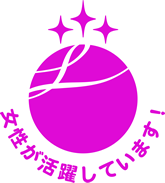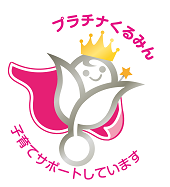In the "NRI Group Vision2030" Long-term Management Vision, "Envision the value, Empower the change" vision statement, and Medium-Term Management Plan, the NRI Group states that the linking and mobilization of diverse human resources, or the promotion of Diversity & Inclusion (D&I), is the Human Resources Strategy for supporting the growth of the Group.
We strive to create a workplace environment that provides each one of our employees, who have diverse values and individualities, with growth opportunities, the chance to work, and prospects for embracing challenges regardless of their race, nationality, gender, age, disability, sexual orientation, and gender identity, while utilizing their different skills and abilities.
Promoting Diversity and Inclusion (D&I)
In FY2010, we established an organization for promoting diversity to promote diversity and inclusion within the NRI Group.
It implements various measures for promotion of women’s participation and advancement in the workplace, support for balancing work with childbirth, parenting and nursing care, promoting the success of mid-career hires, supporting workplace participation by persons with disabilities, and efforts regarding sexual minorities.
Promoting the Success of Female Employees
We started engaging in efforts for female employees via activities for the NRI Women’s Network (NWN) project under the direct supervision of our president, which began in FY March 2008. NWN continues to conduct training, system maintenance, and employee awareness building and information sharing activities based on the three pillars of "helping female employees develop their careers," "supporting training for balancing work and parenting," and "fostering a better corporate culture."
As a result of these past activities, our female employees have been able to continue working through life events.
We aim to create an environment where each employee can utilize their individual abilities and play an active role. In addition to promoting the recruitment, training, and advancement of female employees, we are also working to improve our organizational culture by eliminating unconscious bias among all employees.
Main Efforts for Promotion of Women’s Participation and Advancement in the Workplace
- Training for female managers (with female executive mentors/instructors)
- Training for female manager candidates
- Dispatching employees to external training for the goal of cultivating female managers
- Supporting training for balancing work and parenting (for employees that return to work from childcare leave and their superiors)
- Three-way interviews (for pre-childbirth leave employees and their superiors)
- Creating guidebooks for employees that are pregnant or child-rearing and their superiors and colleagues, with information on balancing work and parenting
- Providing e-Learning (for managers and regular employees) on unconscious bias
- Employee discussions (example themes: male employee participation in parenting, soon-to-be parents, and the reality of shortened work hours)
Goal of Promotion of Women’s Participation and Advancement in the Workplace
Based on the "The Act on Promotion of Women’s Participation and Advancement in the Workplace (Women's Advancement Promotion Law)" enacted in 2016, NRI has formulated an action plan and set the following targets.
As part of our efforts to achieve our goals, we have redefined the targets for "the percentage of women in management positions, such as department heads and section chiefs" and "the percentage of women in leadership roles in projects and businesses." These targets serve as the foundation for nurturing candidates for such positions in a state where "both men and women can thrive regardless of gender." Starting in fiscal year 2025, we will set a new target equal to the percentage of female employees in the target population and work to achieve it.
- ※
2025 Fiscal Year Targets
- Proportion of women in managerial positions (such as department heads and section chiefs): Equal to the proportion of female employees in the target population (9.6%)
- Proportion of women in leadership roles in projects and business operations: Equal to the proportion of female employees in the target population (13.9%)
Action Plan
| Term | From FY2023 to the end of FY2025 |
| Goals |
|
| Initiatives |
|
Status of Female Employees at NRI
1.Hiring
| Ratio of female workers hired (FY2024) |
31.5% |
|
Ratio of female workers (FY2024) |
23.6% |
2.Continued Employment/Work-Style Reform
| Average male/female difference in continuous years worked | 3.3 years |
| Male/female ratio of continuously employed workers hired 10 fiscal years ago and the fiscal years immediately before and after* (FY2024) *From FY2013 to FY2015 |
Male employee: 65.3% Female employee: 67.0% |
| Ratio of taking childcare leave (ratio of employees who submitted a birth report that took childcare leave in the corresponding fiscal year) (FY2024) |
Male employees: 64.9% *Ratio of taking childcare leave or maternity / paternity leave: 92.7% Female employees: 101.5% |
| Average number of days of childcare leave taken by male (FY2024) |
80 days |
| Average monthly overtime hours per worker (FY2024) |
6.5 hours |
| Ratio of taking annual paid leave (FY2024) |
69.2% |
3.Evaluation/Promotion
| Ratio of female managers | 9.5% (As of April 1, 2025) |
| Ratio of female executives (As of June 20, 2025) |
Ratio of female executives as stipulated in the Companies Act: 21.4% Ratio of female senior managing directors, managing directors and executive fellows: 5.6% |
Supporting the Balancing of Work with Childbirth, Parenting and Nursing Care
We support the balancing of work with childbirth, parenting and nursing care, based on the "Act on Advancement of Measures to Support Raising Next-Generation Children (Next Generation Act)" and "Act on Childcare Leave, Caregiver Leave, and Other Measures for the Welfare of Workers Caring for Children or Other Family Members (Child Care and Family Care Leave Law)."
Main Efforts for Supporting the Balancing of Work with Childbirth, Parenting and Nursing Care
- In-office nursery Yumeminato Hoikuen opened (2017)
- Supporting training for balancing work and parenting (for employees that return to work from childcare leave and their superiors)
- Three-way interviews (for pre-childbirth leave employees and their superiors)
- Creating guidebooks for employees that are pregnant or child-rearing and their superiors and colleagues, with information on balancing work and parenting
- Introduction of a new restricted work schedule system for childcare and nursing care (FY2024)
(A fixed-hour, discretionary work system for childcare and nursing care.) - Providing e-learning on basic nursing care knowledge (also recommended for the superiors and colleagues of employees currently nursing care)
Main NRI Systems for Childbirth and Parenting
(Eligible: full-time employees)
| System | Description and Applicable Period |
|---|---|
| Maternity leave |
|
| Shorter work hours during the gestation period |
|
| Pregnancy wellness leave |
|
| Partner childbirth leave |
|
| Childcare leave |
|
| In-office nursery |
|
| Shorter work hours for childcare |
|
| Exemption from working overtime or working on days off due to parenting |
|
| Limits on working overtime due to parenting |
|
| Select/shift work for parenting |
|
| Fixed-hour discretionary work system for child nursing care |
|
| Child nursing leave |
|
Main NRI Systems for Nursing Care
(Eligible: full-time employees)
| System | Description and Applicable Period |
|---|---|
| Nursing care leave |
|
| Shorter work hours for nursing care |
|
| Exemption from working overtime or working on days off due to nursing |
|
| Limits on working overtime due to nursing |
|
| Select/shift work for nursing |
|
| Fixed-hour discretionary work system for nursing care |
|
| Nursing care leave |
|
Promoting the Success of Mid-Career Hires
At NRI, we are strengthening our recruitment efforts to secure human resources with experience in other industries, as well as different skills and areas of expertise. This will allow us to support and promote the accelerating digital transformation (DX) and global strategies of various companies in recent years.
The ratio of mid-career hires in managerial positions is similar to the overall ratio of career employees at NRI. We will continue to promote the inclusion of career employees and the appointment of managers with diverse experience, skills, and expertise.
Main Efforts for Promoting the Success of Mid-Career Hires
- Talks/dialog with the president (the president holds welcome talks with mid-career hires that have been at the company for about half a year)
- Interviews with Successful Mid-Career Hires
Goals of Promoting the Success of Mid-Career Hires
NRI sets the following goals for promoting the success of mid-career hires.
Goals
- Maintain a ratio of mid-career hires in management positions (general managers and group managers), that is equivalent to the ratio of mid-career hires out of all managerial positions (expert class) at NRI.
Status of Mid-Career Hires at NRI (FY2024)
1.Hiring
Transition of mid-career hires
| Fiscal year | FY2019 | FY2020 | FY2021 | FY2022 | FY2023 | FY2024 |
|---|---|---|---|---|---|---|
| The number of mid-career hires | 188 | 150 | 242 | 349 | 269 | 187 |
| Ratio of mid-career hires (FY2024) ※Including the number of employees seconded to subsidiaries. |
25.8% |
2.Evaluation/Promotion
| Ratio of mid-career hires in managerial positions (FY2024) |
24.7% |
Supporting the Workplace Participation of People with Disabilities
NRI actively strives to employ people with disabilities. On July 1, 2015, we established fully-owned subsidiary NRI Mirai, Ltd. (hereinafter "NRI Mirai") for the purpose of further promoting the employment of people with disabilities, and the company was certified as a "special subsidiary*2" as defined in the "Act Promoting the Employment of People with Disabilities*1" on October 1.
NRI Mirai provides employees with various disabilities work opportunities such as setting of meeting rooms and libraries, supporting training, collecting/ delivering internal mail, managing of miscellaneous goods, and "healthkeepers" (in-house physical therapists) work at massage rooms located at our main offices. We will continue opening up opportunities to promote the participation of those with disabilities.
- ※1
Act Promoting the Employment of People with Disabilities (law promoting the employment of people with disabilities):
This law was enacted for the purpose of ensuring stable occupations for people with disabilities via measures for promoting employment based on an obligation to hire people with disabilities. The law was revised on April 1, 2018 to require private companies with 45.5 or more employees to maintain a ratio of at least 2.2% people with disabilities. This was further increased to 2.5% for private companies with 40 or mor employees in April 2024. - ※2 Refers to a subsidiary that gives special consideration to promote the employment of persons with disabilities, and in doing so meets certain requirements. Obtaining certification from the central government allows persons with disabilities employed by this type of subsidiary to be deemed as being employed by the parent company.
Status of people with disabilities employed at NRI (as of June 1 each fiscal year)
| Fiscal year | FY2019 | FY2020 | FY2021 | FY2022 | FY2023 | FY2024 |
|---|---|---|---|---|---|---|
| The number of people employed | 166 | 170 | 181 | 191 | 208 | 226 |
| Employment rate (%) | 2.45 | 2.35 | 2.37 | 2.42 | 2.42 | 2.54 |
Efforts Regarding Sexual Minorities
As part of our initiatives for creating a workplace that promotes diversity and inclusion, we implement efforts regarding sexual minorities.
We provide content promoting the understanding of sexual minorities in training for new employees, as well as fundamental training on sexual minorities for all employees via e-learning.
External Recognition/Ratings
Our efforts regarding diversity and inclusion have led us to receive the following external recognition/ratings.
- Eruboshi certification (highest level)
- Kurumin certification/Platinum Kurumin certification



See Evaluations for details.
(This information is current as of June 30 , 2025)